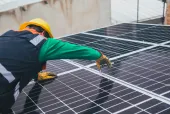
COVID-19 outbreak to hit Asia's power consumption growth
Markets heavily reliant on manufacturing and construction will likely be worst-hit.
A slowdown in economic activity due to the impact of the coronavirus outbreak is expected to weigh on power consumption in Asia, particularly in markets where economic growth is more energy intensive, according to a Fitch Solutions report.
The report stated that power consumption will take the most impact in markets where GDP is reliant on the manufacturing and construction sector, as these sectors usually account for the largest share of power consumption.
Outside of China, Fitch expects manufacturing sectors in South Korea, Taiwan, Malaysia and Vietnam to come under the heaviest pressure in H1 2020, largely from supply chain disruptions due to their dependency on China and the containment of domestic spread of the virus.
China’s initial aggressive measures to prevent the spread of the virus domestically have led to substantial supply chain disruptions in the region, the report noted.
A large dependency on China for these components have led to spillover effects, as shortages weigh on domestic productions.
Meanwhile, a localised spread and domestic containment measures could also lead to labour shortages and other logistical mobility issues which will inevitably weigh on manufacturing and production capacities.
Some larger corporations have previously tried to diversify sources for their raw materials amidst a shortage from China to tide over their productions; however, these might also come under increasing stress given that many cities across the world have announced lockdowns over the past week.
Fitch noted that fiscal stimulus measures have driven power consumption surges over the past few years in multiple markets, but such a possibility is dwindling. Policies may not be introduced in time to have a material impact on 2020 growth, given the time lags between policy introduction and actual project execution.
Furthermore, should the outbreak progress further, these markets might not have sufficient fiscal policy space to implement these measures effectively, particularly in those markets with high debt-to-GDP ratios.













 Advertise
Advertise











